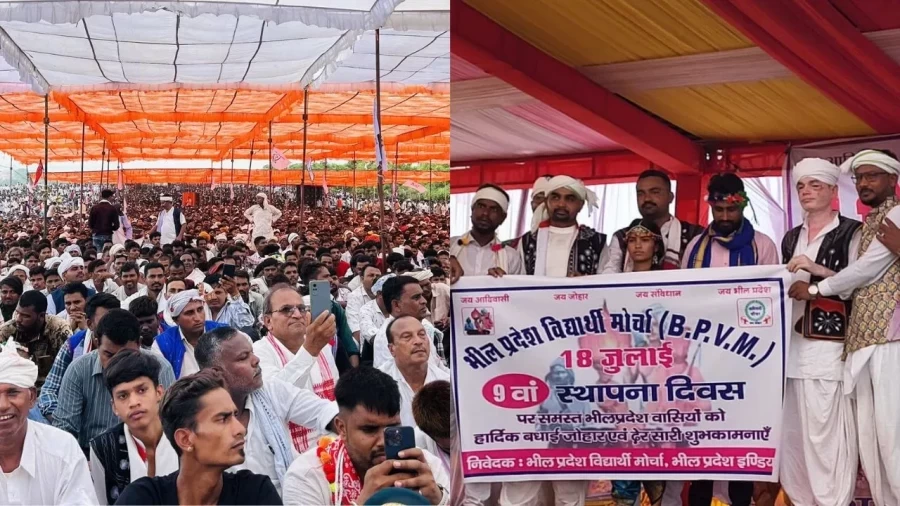Rajasthan Tribal Community's Demand for 'Bhil Pradesh' Rejected by State Government

Rajasthan Tribal Community’s Demand for ‘Bhil Pradesh’ Rejected by State Government
Jaipur, 20th July 2024 – The tribal communities in Rajasthan have intensified their demand for the creation of a new state called ‘Bhil Pradesh’, a proposal that has been met with staunch rejection from the state government. This demand, spearheaded by various tribal organizations, calls for the amalgamation of 49 districts across Rajasthan, Maharashtra, Gujarat, and Madhya Pradesh into a distinct state aimed at addressing the socio-economic and cultural needs of the Bhil tribal population.
The Demand for Bhil Pradesh
The demand for Bhil Pradesh is rooted in the longstanding issues faced by the Bhil tribes, one of the largest tribal communities in India. Leaders of the tribal society argue that the current administrative structures in the four states fail to effectively address the unique challenges and developmental needs of the Bhil population. They assert that a separate state would enable better governance, focused development programs, and preservation of their cultural heritage.
Key Proponents and Their Arguments
Leaders like Mahesh Bhil, a prominent figure in the tribal rights movement, have been vocal about the demand. “For years, our communities have been marginalized and neglected. The creation of Bhil Pradesh is essential for ensuring that our voices are heard and our needs are met,” said Mahesh Bhil at a recent rally.
Advocates for Bhil Pradesh highlight issues such as inadequate infrastructure, lack of educational and healthcare facilities, and limited employment opportunities in tribal regions. They believe that a dedicated state government could prioritize these issues more effectively than the existing state administrations.
Government’s Response
The Rajasthan state government, however, has firmly rejected the demand for a new state. In a recent statement, Chief Minister Ashok Gehlot emphasized the government’s commitment to the unity and integrity of the state. “The creation of a new state is not a viable solution. We are dedicated to the development and welfare of all our citizens, including the tribal communities,” said Gehlot.
The government argues that the demand for Bhil Pradesh would lead to administrative complications and potentially set a precedent for other regional and ethnic groups to demand separate states, thereby fragmenting the country. Instead, the state government has proposed enhanced development initiatives specifically targeted at tribal areas, aiming to address their grievances within the existing state framework.
Opposition and Support
The proposal for Bhil Pradesh has also sparked a mixed reaction from political parties and social groups. While some opposition leaders have expressed sympathy for the tribal community’s concerns, they stop short of supporting the creation of a new state. On the other hand, certain tribal rights activists and NGOs have pledged their support for the movement, organizing rallies and public meetings to mobilize support.
The Road Ahead
Despite the government’s rejection, the tribal community remains steadfast in their demand. Leaders have vowed to continue their agitation through peaceful protests and legal avenues. They are also seeking support from national tribal organizations and political allies to press their case at the central government level.
The demand for Bhil Pradesh brings to the forefront the broader issue of tribal welfare and the need for inclusive development policies. As the movement gains momentum, it remains to be seen how the state and central governments will navigate this complex and sensitive issue.
Conclusion
The demand for the creation of Bhil Pradesh underscores the ongoing challenges faced by tribal communities in India. While the state government’s rejection of the proposal highlights the complexities involved in altering state boundaries, the persistence of the tribal leaders suggests that this issue will remain a significant topic of discussion in the region’s political and social landscape.